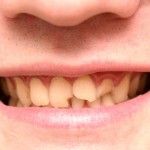
Traumatic dental injuries account for about 5% of all body injuries although the mouth occupies only around 1% of the total body area (Dental Elf – 15th May 2018). Crown fractures are more common than luxation injuries in the permanent dentition and prompt and accurate management improves prognosis and reduces complications. Vital pulp therapy to maintain the vitality of compromised pulp tissue is a key element of management and a number of interventions have been reported.
The aim of this review was to assess the success of vital pulp treatment in the management of traumatised human vital permanent teeth diagnosed with complicated crown or crown-root fractures.
Methods
A protocol was registered in the PROSPERO database and searches conducted in the Cochrane Central Register for Controlled Trials (CENTRAL), Medline/PubMed, Embase, LILACS, Scopus, Web of Science, OpenGrey, ProQuest Dissertations and Theses, Google Scholar (first 50 returns only) and ClinicalTrials.gov databases. This was supplemented by searches of the journals; Australian Endodontic Journal, Dental Traumatology, International Endodontic Journal, Journal of Endodontics, and Oral Surgery Oral Medicine Oral Pathology Oral Radiology and Endodontology.
Randomised, non-randomised and quasi-randomized clinical trials, cohort studies, case-control studies, and case series of at least 5 cases and a minimum of 12-months follow-up period assessing the outcomes of vital pulp therapy (VPT) carried out in vital human permanent teeth (immature/mature) diagnosed with complicated crown fracture or crown-root fracture, with or without concomitant injuries, and published in English were considered. Two reviewers independently selected studies and extracted data with risk of bias being assessed using the National Institutes of Health’s (NIH) quality assessment tool. Disagreements were resolved in discussion with a third reviewer. A narrative summary was presented.
Results
- 14 studies (2-controlled clinical trials, 1-case-control, and 11-case series) involving a total of 1081 permanent teeth were included.
- 12 of the 14 studies were conducted in a university setting in patients aged between 6-42 years of age.
- 10 studies reported on partial pulpotomy, 3 on full pulpotomy and one on direct pulp capping.
- 11 of the case series were considered to be of good quality, the case-controlled study of ‘fair ‘quality‘ with one RCT of good quality and one ‘fair’.
- A summary of the success rates for the various techniques and materials included in the review is shown in in the table below.
| Overall success rate | |
| Partial pulpotomy | 82.9 – 100% |
| Complete pulpotomy | 79.4 – 85.7% |
| Direct pulp capping | 19.5% |
| Calcium hydroxide | 79.4 – 100% |
| Biodentine® | 80 – 91% |
| Mineral trioxide aggregate (MTA) | 80 -100% |
| IRoot® BP | 90 -100% |
Conclusions
The authors concluded: –
……. review reports high clinical and radiographic success rates of VPT interventions in the treatment of traumatized vital permanent teeth, although based on limited clinical evidence of variable quality rating. Calcium hydroxide was the most studied pulp capping material with favourable clinical outcomes. The most recent evidence, although of limited studies, also suggests that alternative bioactive biomaterials (Biodentine®, IRoot® BP and MTA) are associated with high clinical and radiographic success and are regarded as a suitable VPT biomaterial. Crown discolouration following the use of MTA limits its use in the management of traumatized anterior teeth in comparison to Ca (OH)2 and other less discolouring calcium silicate material such as Biodentine® and non-bismuth oxide–containing MTA.
Comments
A broad range of databases have been searched although restricting the inclusion to studies published in English may have excluded some relevant studies. With the exception of studies all the included studies lacked controls. The authors also highlight substantial heterogeneity in clinical protocols employed, assessment criteria and outcome reporting. While the findings suggest good success rates for the materials used it should be noted that while 10 studies reported on the use of calcium hydroxide few studies included other bioactive materials. Well designed and reported randomised controlled trials of appropriate size using commonly agreed outcomes are needed to clarify the effectiveness of the various materials available for vital pulp therapy in traumatised permanent teeth.
Links
Primary Paper
Matoug-Elwerfelli M, ElSheshtawy AS, Duggal M, Tong HJ, Nazzal H. Vital pulp treatment for traumatized permanent teeth: A systematic review. Int Endod J. 2022 Jun;55(6):613-629. doi: 10.1111/iej.13741. Epub 2022 Apr 10. PMID: 35348216.
Other references
Dental Elf – 24th Sep 2021
Dental Elf – 28th Oct 2019
Dental Elf – 15th May 2018
